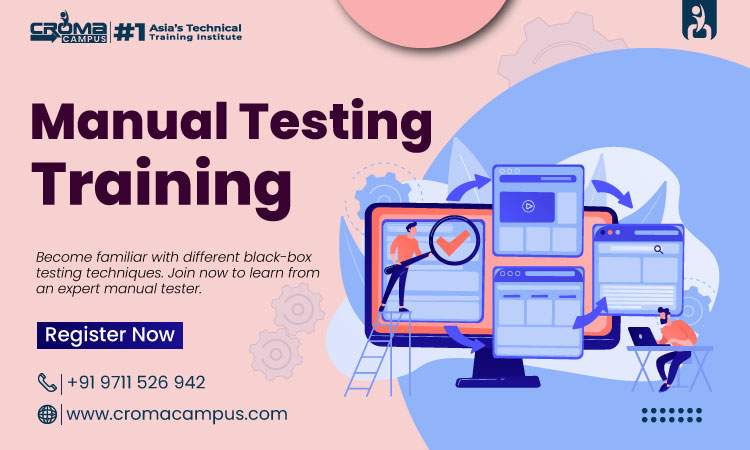Introduction
Software testing becomes a significant part of the Software Development Life Cycle (SDLC) as it analyzes the software product/application. It mainly establishes whether the newly built application meets the business requirements and its specifications. Additionally, testing verifies each functionality throughout different stages of SDLC and further validates the app performance.
Now that you are familiar with how software testing works let’s look deep into its different types. Manual Testing is one of the approaches in the process of software testing. Manual Testing Training Institute in Delhi can guide you better in understanding its different features and benefits.

What is Manual Testing?
In the process of Manual testing, a Software Tester physically tests a software application to identify bugs without any automation tool. Manual testers follow a written test plan that follows a set of distinct test scenarios. They start by comparing the actual behavior of software to the expected behavior, and any difference is termed a bug. It allows them to better understand the end user’s perspective and further evaluate an application on the basis of its most important feature.
When to do manual testing?
Adhoc testing
Adhoc testing, is actually unplanned testing. It does not have any specific approach or documentation with it. Adhoc testing is entirely informal, and the only critical factor is the knowledge and insight of the tester.
Usability testing
You perform usability testing to assess how convenient, efficient, and user-friendly the product comes out to be for the end users. For this assessment, we need the highest manual intervention and cannot only rely on tools to assess it for you. So to evaluate the product from the end-user point of view, you prefer manual testing.
Exploratory testing
When the documentation of the test is poor, and you have a short time for execution, this exploratory testing demands the analytical skills and creativity of the tester and even the tester’s product knowledge. When you perform exploratory testing, you go for manual verification as you cannot use tools with little knowledge or documentation.
Benefits of Manual Testing
Short-term Cost Management
The cost of purchasing software automation tools is generally extremely high. However, manual testing is less expensive in the short term as it requires no QA automation tools. Additionally, since it is a completely manual process, you only need to worry about putting the initial costs.
Less complicated to implement
You can hire a QA tester for manual testing easily in comparison to automation testing. Many manual testing tasks can be done without any access to code or even knowledge of coding.
Greater attention to difficult issues
Running automated test cases to check every possible result for a feature can take a while. In this situation, manual testing lets testers concentrate more on logical edge cases for more challenging features and functionalities rather than simulating every possible user path.
Look at underlying user issues
Manual testing identifies bugs that do not relate to the code, such as server responsiveness. It allows the developing application to use in the same manner as when it was released. Manual testing is more likely to identify flaws that emerge when a user makes use of the software in a particular way.
Greater flexibility
In an agile environment, the capability to react to the slightest necessary changes is instantly required. In this case, manual testing provides the flexibility to quickly test a new feature or even check any changes in the UI.
Conclusion
Manual testing demands creative skill and imagination so that a tester can imagine different scenarios to test a particular application. Additionally, the manual tester does not need to have expert software skills, but creativity and imagination are important. Moreover, manual testing is essential at the base of testing. Go for Manual Testing Training in Gurgaon to learn to find specific bugs in the application manually.

